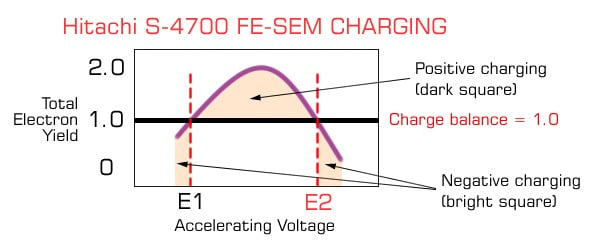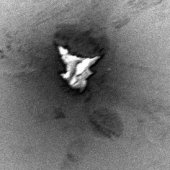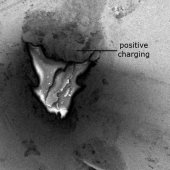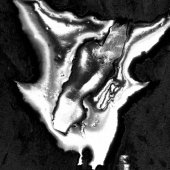Types
Charging occurs when a specimen material cannot conduct the charge of the beam. There are two types of charging.
Negative
Negative charging is a result of electrons becoming trapped within the sample, causing the charge to build and the sample to "glow". The glowing is merely an artifact of an increase in signal production.
Positive
Positive charging is a result of emission of more electrons from the sample than are provided by the beam. A dark spot appears on the image.
Determination
How do you know which type of charging is present?
- Focus on an area at high magnification. (Use the magnification at which you will be imaging, as charging is related to magnification strength.)
- Let the beam sit on the sample for a few seconds.
- Reduce the magnification and observe the sample.
- If there is a bright spot, the sample is experiencing negative charging; lower the voltage.
- If a dark square appears and then quickly disappears, the sample is experiencing positive charging; raise the voltage. If the dark square remains, it is probably a result of contamination on the sample.
Charge Balance

E2 Values for Common, Uncoated Materials
(Echlin, Patrick, and Dale E. Newbury. Scanning Electron Microscopy and X-Ray Microanalysis. 2nd ed. New York, NY: Springer, 1992. 111.)
| Material | E2 (keV) |
|---|---|
| PVC | 1.65 |
| Teflon | 1.82 |
| Quartz | 3.0 |
| Alumina | 4.2 |


